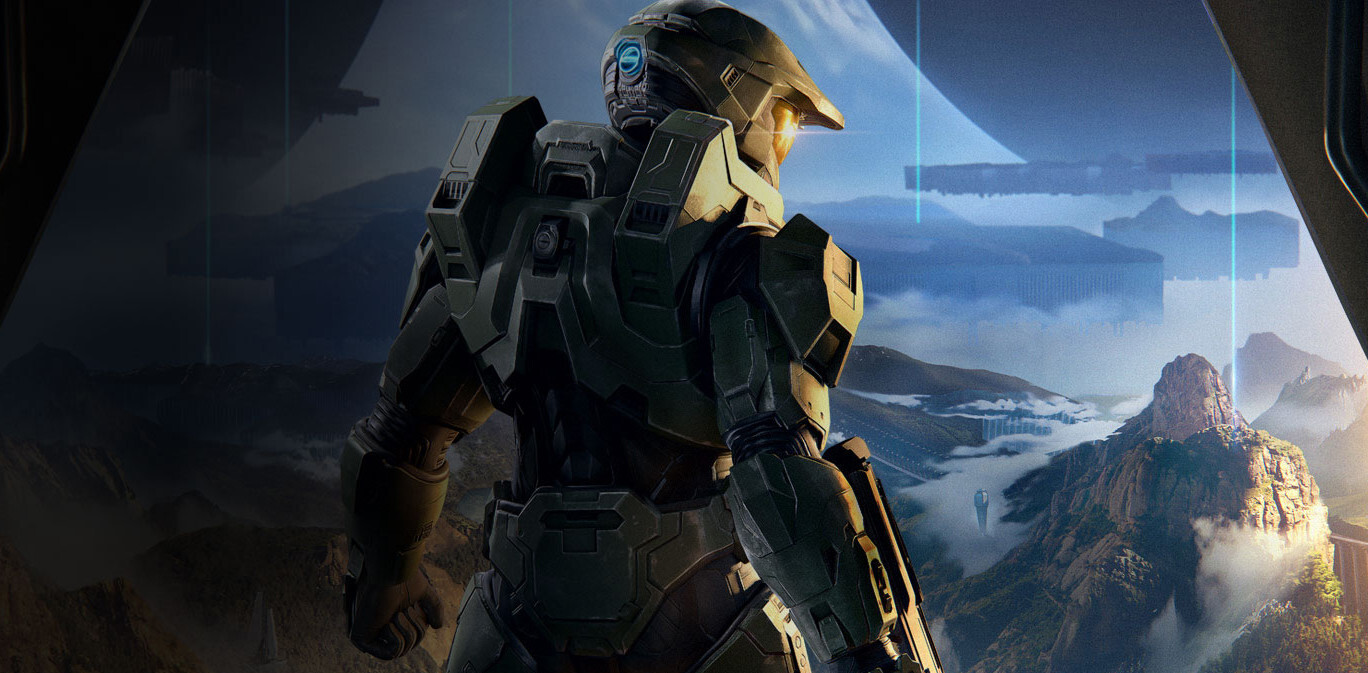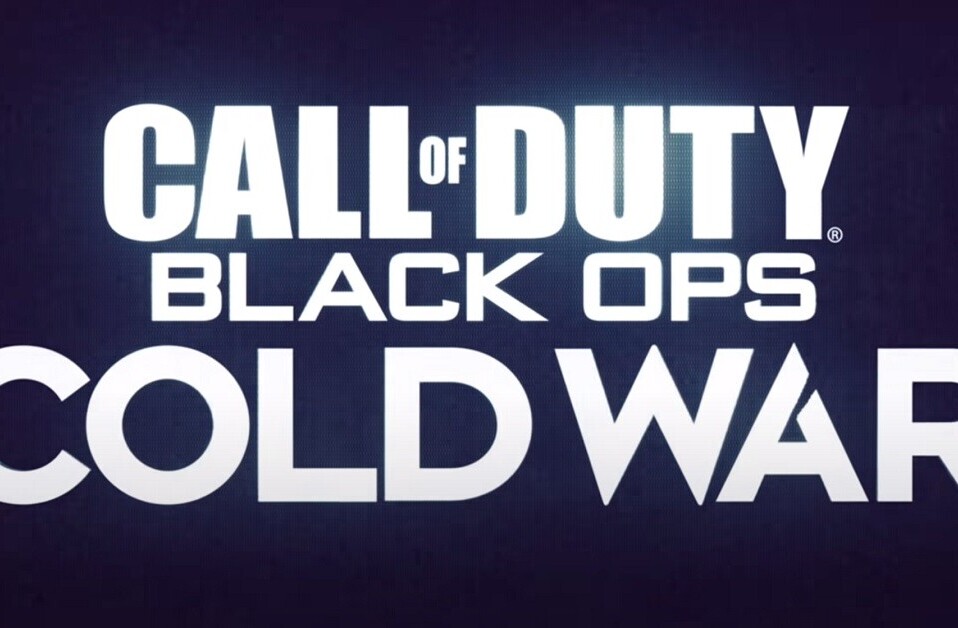
The year is 2012. Square Enix reveals a gameplay trailer of its upcoming action-adventure title, Tomb Raider, at E3. At a pivotal moment, gaming legend Lara Croft has been discovered in a hiding place during a dramatic escape from an enemy encampment. A grizzled, armed man grabs her by the shoulder, then proceeds to run his hands down the sides of her body. The camera pauses as he’s doing so to allow the viewer to process what they’re seeing: one of gaming’s strongest and most fearless protagonists — who has never before even shared a kiss in-game — is about to be sexually assaulted.
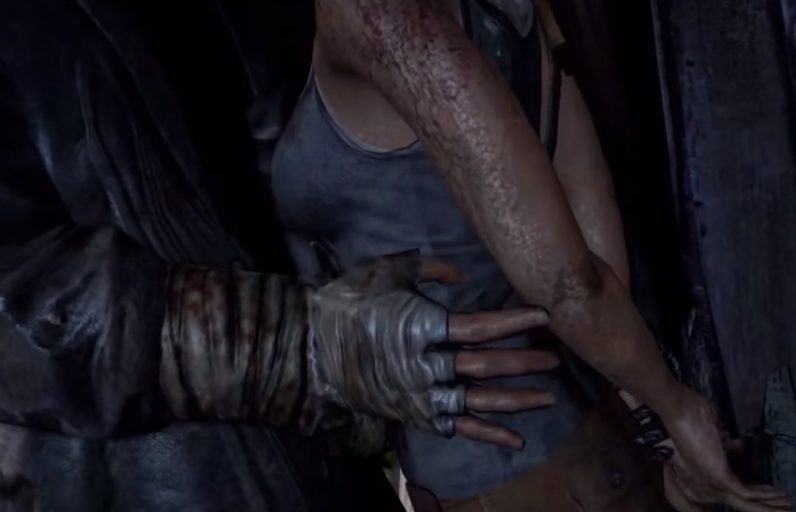
Luckily for Lara and the rest of us, that doesn’t happen, but the attitude with which this moment of implicit threat was treated by the developers left some gamers with a bad taste in their mouths. It raised a question which, eight years later, still has not been answered by the industry at large: When is sex and/or sexual violence in games okay? And when one does include it, how far is too far?
A brief history of sex in games
Given the roots of the games industry really took hold in the seventies, sex has been folded into the medium from the very beginning. Some of the earliest console games involve pixelated depictions of sexual conquest — take, for example, the Atari 2600 game X-Man, in which a nude man navigates a labyrinth to find his paramour. That game ends with the player attempting to please the blonde woman by wiggling the Atari’s joystick. In spite of how rudimentary the graphics are, one of the first things someone thought to make with them was a sex scene.
One of the first companies to specialize in adult video games was Mystique, an offshoot of a company called American Multiple Industries (AMI). Mystique’s Atari 2600 canon includes such charming games as Beat ‘Em & Eat ‘Em (two nude women have to catch in their mouths the falling semen of a man masturbating off the side of a roof), Burning Desire (an air rescue worker must save a woman from being burned to death by cannibals and is given “a hero’s favorite reward”) and Bachelor Party (probably self-explanatory). The president of AMI is quoted by the New York Times as saying his company’s products exist because, “I just don’t believe adults want to shoot down rocket ships.”
Sex-as-gameplay-reward remained a staple that cropped up in games well into the 21st century. From the antics of gaming’s most snappily-dressed loser lounge lizard, Leisure Suit Larry — the point of whose games is the seduction of beautiful women in the most hilarious way possible — to the headboard-rattling antics of Kratos in God of War, sex being either the point of a game, or a lucrative side activity, has never been unusual.
Over time, sex has become less of a pornographic oddity and more of a common element of storytelling in games. Sex-with-woman-as-gameplay-goal is still an unfortunate part of the medium, but some games have incorporated it in a less lurid manner. The “romances” of Witcher or Dragon Age make the activities about the characters involved in them and how they relate to each other, which is probably as close as the medium is likely to get to a nuanced portrayal of sex as a normal part of human relationships.
It’s worth noting that, in many of the examples of modern games that include sex, the act itself is not interactive. The player controls the character on the way there, but doesn’t “take part” in the activity. There are exceptions, though — the aforementioned Kratos, the rather awkward Heavy Rain love scene, and of course the ‘Hot Coffee’ mod, which we’ll get to in a moment.
Even in the modern industry, games that attempt to throw sex scenes in for the spectacle are usually widely derided — Ride to Hell: Retribution, whose scenes were incredibly poorly animated and even more poorly contextualized, is probably the first example to spring to mind. Destructoid’s review of the game called each of these scenes “a silent, fully-clothed (because rendering undressed characters would be just too much work), shoddily animated few seconds of what a child might believe sex looks like.” It also noted the game’s “casual misogyny” in treating its female characters as “[walking] fuckboxes, who exist to get kidnapped, rescued, and screwed.”
How much is too much?
While the gaming industry has seemed to reach its own equilibrium with sex in games — namely, what counts as a “mature” depiction of it — the rest of the world still seems to struggle with it. The question of whether sexual content in games is ever appropriate has gone as far as the legal system, and the dubious court of public opinion.
Sex, like violence, is often flogged as something games have in such excess as to corrupt the minds of the innocents playing them. One of the first major moral panics surrounding video games came in 1993, when the US Congress held hearings over the question of morally dubious actions in games. Two games were at the epicenter: Mortal Kombat and Night Trap.
While Mortal Kombat — with its gore and hyperviolence — was an obvious target for potential censorship, Night Trap’s objectionable content was a bit more ephemeral. The goal of the game was to protect a house full of young women from vampires and dangerous traps, the style recalling the schlocky B-grade slasher movies of the preceding decade. The senators who viewed footage of a specific event in the game — in which the player is unsuccessful in protecting a nightgown-clad woman from a group of bloodsuckers — claimed the game aggrandized sexual violence against women (there is no depiction of sexual violence in the game). Senator Joseph Lieberman in particular claimed it would “teach a child to enjoy inflicting torture.”
Then-Chairman of Nintendo of America, Howard Lincoln, told the committee holding the hearings that Night Trap, which was originally released on the Sega CD, would never be available on a Nintendo console: “Obviously it would not pass our guidelines. This game … which promotes violence against women, simply has no place in our society.” Night Trap was released on the Nintendo Switch in 2017.
Since then, the question of whether to include sex in a game — interactive or otherwise — has been a perennial complaint amongst parents and moral guardians. Rockstar Games, not a company known for its squeamishness, considered at one point having a scene in Grand Theft Auto: San Andreas where protagonist CJ has sex with his girlfriend that the player can control. This was not accessible in the retail version, but, as the code remained in the game, modders were able to access it. This “Hot Coffee” minigame sparked a widespread controversy, particularly since its existence was apparently not disclosed to the Entertainment Software Ratings Board (ESRB) before the game was given its rating.
Interestingly, Hot Coffee apparently caused such a problem for Rockstar that, when I approached employees asking about the company’s use of sex in their games, they demurred from speaking on the subject solely because of this. Even today, the company can’t shake the repercussions despite the act of sex still playing an important role in the Grand Theft Auto games.
But that’s not to say gamers themselves are immune to this sort of knee-jerk disgust over sex in games. In 2017, a game called House Party arrived on Steam’s Early Access program, offering gamers a chance to play what the developers describe as “an open-ended social simulator mixed with a point-and-click adventure inspired by classic comedies of the 90s.” After it’d been available for some time, it was pulled following numerous complaints from gamers over its sexual content. Rock Paper Shotgun called the early access version a “misogynistic pile of shit,” and said it was “a fascinating exploration of a certain type of male mind… that sees women as goals to be conquered, rather than autonomous individuals.”

Bobby Ricci, the creator and lead developer of House Party, told TNW: “My intention wasn’t to write a game about sex. I wanted to have a game with sex in it, because why not try to push the envelope a bit?” Ricci said the game’s perceived misogyny was the result of the game being in early access at the time, saying there were supposed to be in-game consequences for being sexually aggressive with the female partygoers. “A lot of that stuff wasn’t really present at the beginning, and I think that shaped some people’s perceptions. They thought it was a sex simulator — go in and do whatever you want, no repercussions.”
But Ricci said giving gamers the option to attempt to pursue those interactions was part of the point. “If you took all the sex in the game, and compared it with the rest of the content, it would only amount to around five percent of the game.” He said the House Party developers themselves weren’t sure where the line was. “I don’t see a difference between grotesque violence and sex. I thought, ‘Well, if this was okay, then this must be okay.’ I learned where the line was relatively quickly because I apparently crossed it.” House Party was later reinstated on Steam, where it remains available today.
The first roadblock to answering the question, “How far is too far?” is the bias of personal taste. One gamer may be able to play a Leisure Suit Larry game without blinking, while the chaste kisses in the likes of Stardew Valley might be all another gamer is willing to tolerate. “Too far” means different things to different people.
The question of rape
All of the above covers the use of consensual sexual encounters in games. As you might expect, the water gets ten times muddier when the topic is sexual violence in games.
Sexual assault has, unfortunately, been in games for just as long as sex itself. Mystique’s most infamous product is undoubtedly Custer’s Revenge, which depicts the apparent rape of a Native American woman by the eponymous historical figure. While its other games were, at worst, gross curiosities, this one raised protests from women’s rights groups and Native Americans alike. Even now, 37 years after its release, Custer’s Revenge is still cited as an example of the worst the medium can produce.
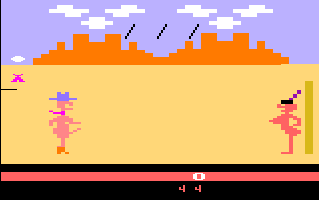
In many cases, for many publishers and platforms, lack of consent is the line, the bridge too far. Adult gaming website Nutaku, which offers a platform for some of the most explicitly sexual games on the market (yes, this is the same site that made my hentai hot sauce), prohibits games which depict non-consensual acts.
“Games themed around molestation, sexual assault or otherwise non-consensual sexual acts, are not permitted on the platform… We aim to provide fun, engaging, sexy games for players around the world,” a Nutaku spokesperson told TNW. When asked whether this is affected by player demand — the whole “this wouldn’t exist if someone didn’t want to play it” argument — the spokesperson reiterated: “Our compliance guidelines set a clear standard. They are unaffected by context or consumer demand.”
Read: Sexual violence should never be the goal of a video game
For another example of rape being the line, see the infamous Rape Day controversy. To fully give context, Valve said in June 2018 it would take a hands-off approach to the games sold in its popular gaming storefront, Steam. After a history of banning and unbanning whatever was considered tasteless by the general public, Steam appeared to be removing itself from culpability with this laissez-faire approach.
But everyone could tell it was only a matter of time before a game came along to test that resolve. Enter Rape Day.
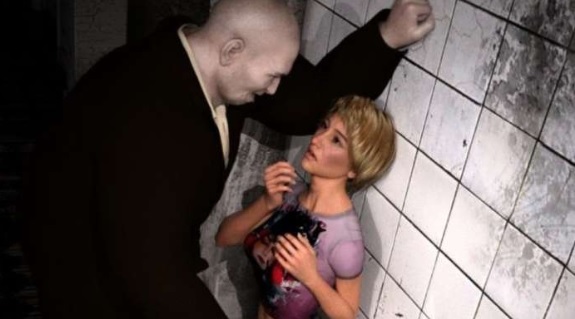
This game, in which you played a serial rapist preying on women during a zombie apocalypse, hit Steam like a perfect storm. It was everything Steam’s detractors feared would flourish on the platform if Valve really did take its hands off the wheel — an ugly, terrifying game that seemed to revel in a highly taboo subject.
Steam banned Rape Day shortly after its existence was brought to light, saying “We respect developers’ desire to express themselves, and the purpose of Steam is to help developers find an audience, but this developer has chosen content matter and a way of representing it that makes it very difficult for us to help them do that.”
Keep in mind, other games have been banned from Steam due to public pressure and eventually came back. Hatred, Active Shooter, and House Party all survived the onslaught of outcry and were eventually released. But not Rape Day — because apparently a game that unrepentingly depicts sexual assault is the “content matter” Steam chooses to abhor.
When violence is acceptable
There’s also the aforementioned Tomb Raider controversy. In that particular case, the distaste of implied sexual violence was compounded by an undercurrent of sexism based on certain remarks by the developers. Shortly after the 2012 E3 trailer was released, the game’s executive producer, Ron Rosenberg, said in a now-infamous Kotaku interview that the attempted rape was “a huge step in [Lara’s] evolution.”
He also went on to say, “When people play Lara, they don’t really project themselves into the character… They’re more like ‘I want to protect her.’ There’s this sort of dynamic of ‘I’m going to this adventure with her and trying to protect her.’” This was in response to a question about what it’s like developing a game with a female protagonist.
Needless to say, gamers were not pleased, either by the implication that playing the game with a female lead necessarily casts the player as her protector, or by attempted rape being the cudgel with which Lara is beaten into being a tougher, more ruthless protagonist. Here’s a snippet of some of the article’s comments, responding to what Rosenberg said:
Darrell Gallagher, then-head of developer Crystal Dynamics, later clarified that this scene is not intended to be read as an implied assault threat: “Sexual assault of any kind is categorically not a theme that we cover in this game” In the final release of the game, Lara will not be sexually assaulted by the mercenary even if the player fails that particular quicktime event. Instead she’ll only (“only”) be throttled. The only hint left in the game is the uncomfortable groping seen in the original trailer.
That said, there are cases where even rape has been used in games to create an effect, without raising an outcry. For example, there’s a scene at the end of F.E.A.R. 2 in which protagonist Michael Beckett is summarily captured and left at the mercy of villainess Alma, a sort-of semi-corporeal psychic spirit who’s been pursuing him all game.
Interspersed between an intense final boss battle Beckett’s fighting in his mind, we’re treated to disturbing cuts of Alma raping his subdued body. And there’s no ambiguity about what’s happening — in the next game, a traumatized Beckett reveals that Alma is pregnant from her assault on him.
This is an instance of non-censensual sex being used in a game without raising a general outcry. Whether this is because the rape is important to the story, because it’s at the very end of the game, or because the victim is a man, is difficult to say. Incidentally, the ESRB rated this game “M,” and described the above scene thus: “A sexual assault is vaguely depicted accompanied by images of a writhing body and moaning sounds.”
Context is key
The only practical solution, at least according to gaming’s moral guardians, is to judge each game’s use of sex on its individual merits. Whether a sex scene is merited by an in-game relationship, whether it’s depicted as artistic or realistic, whether it even makes sense to include — these are all things gamers subconsciously consider when processing sex in games, and the officials who rate games have to find ways to quantify them.
A spokesperson for the ESRB, when asked about the organizations judgements with regards to sex in video games, said such content doesn’t automatically garner a particular rating — they have to know the context in which it’s included: “For instance, is the content explicit or implied, is it a reference or a depiction, how distant or close-up is the depiction, how realistic is the portrayal or graphical style of the content in question, is there partial or full-frontal nudity, is genitalia exposed, etc.?”
ESRB reps determine a rating after seeing a game’s questionable content, which is provided to them by the publisher. “In many situations, one may find that perspective or camera angle would play a key role in determining the rating. If the player can see sexually explicit content in detail or a prolonged basis, it’s reasonable to expect that a game would receive a more restrictive rating assignment. But again, context is a hugely important factor in determining a rating assignment.”
The line is still ephemeral enough that game developers can cross it without realizing they have done so. And when it comes to the gamers and officials who make the final ratings call, it appears the gold standard for judging the appropriateness of sex is still that old Supreme Court chestnut: “I know it when I see it.”
Get the TNW newsletter
Get the most important tech news in your inbox each week.
